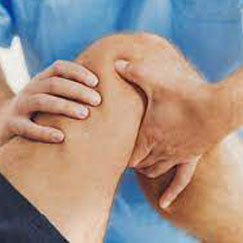Osteopathy Treatment: Gentle, Hands-On Therapy for Pain Relief and Body Balance
Osteopathy is a holistic, non-invasive manual therapy that focuses on the diagnosis, treatment, and prevention of musculoskeletal disorders. Osteopathic treatment works by using hands-on techniques such as stretching, gentle pressure, and joint mobilization to improve circulation, relieve tension, and enhance the body’s natural healing processes. Rather than just addressing symptoms, osteopathy aims to treat the root cause of discomfort by restoring overall alignment, balance, and mobility. Practitioners consider how your bones, muscles, ligaments, and connective tissues work together and how imbalances in one area can affect the rest of the body. It’s a safe and effective option for people of all ages dealing with back pain, joint issues, posture problems, or chronic tension. Many find osteopathy both therapeutic and relaxing.
Common Treatment Areas & What It Addresses
Osteopathy Treatments target various areas of body including:
- ✓ Lower Back: Relieves tension and improves spine alignment.
- ✓ Neck & Shoulders: Eases stiffness and reduces tension headaches.
- ✓ Hips & Pelvis: Restores balance and relieves pain from uneven posture.
- ✓ Joints (Knees, Elbows): Increases mobility and reduces inflammation.
- ✓ Head & Jaw (TMJ): Addresses jaw tension, clenching, and related headaches.
- ✓ Sciatica & Nerve Pain: Releases pressure on pinched nerves.
- ✓ Postural Problems: Corrects muscular imbalances from poor desk habits or repetitive movements.
Who Should Consider Osteopathy Treatment?
Osteopathy is suitable for individuals experiencing musculoskeletal pain, postural imbalances, restricted mobility, or tension-related headaches. It is also beneficial for those recovering from injury, dealing with chronic conditions like arthritis, or seeking a gentle alternative to conventional physiotherapy. Both sedentary and active lifestyles can lead to misalignments that osteopathy can help correct.
Understanding Risks: Safety, Side Effects, and Smart Choices
Osteopathy is generally very safe when performed by a qualified osteopath. Minor side effects may occur but typically resolve quickly. Some of the potential side effects of this treatment are:
- ✓ Mild Soreness after Treatment
- ✓ Temporary Fatigue
- ✓ Lightheadedness
- ✓ Bruising (Rare)
- ✓ Aggravation of Symptoms (Very Rare)
- ✓ Headache Following Upper Body Manipulation
How to Prepare for Your Osteopathy Treatment
Wear loose, comfortable clothing that allows easy movement. Avoid heavy meals just before your appointment. Come prepared to discuss your medical history, current symptoms, lifestyle habits, and any recent injuries. Bring any relevant imaging or doctor’s notes if applicable. Be open about your concerns so your osteopath can tailor the session to your specific needs.
What to Expect During an Osteopathy Treatment
Your session begins with a full consultation and assessment of posture, flexibility, and movement. The osteopath will use their hands to gently manipulate muscles and joints using various techniques. Treatment may involve stretching, mobilization, and soft tissue massage. Most people find it relaxing, though mild discomfort may occur during certain adjustments. Sessions typically last 30–60 minutes.
What to Know About Aftercare & Results
You may feel sore or tired for a day or two after your session—this is normal as your body adjusts. Gentle movement, hydration, and rest are advised. Avoid intense workouts immediately afterward. Many people feel immediate relief, while others notice improvement over a few sessions. Ongoing care may be recommended for chronic issues or injury recovery.




